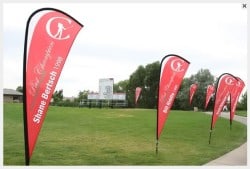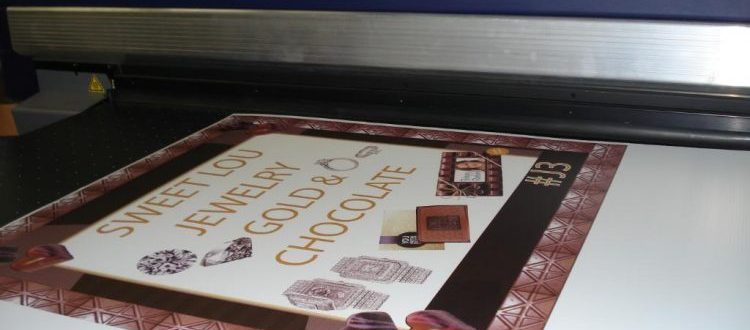Can Plastic be Printed through Dye Sublimation?
Question: Are you able to print plastics using dye sublimation printing?
Pretty much anything that has the correct chemical composition – i.e. is made from polymers (is polymeric in its chemical structure), it can be printed. Or, if not, if your substrate, whether it be leather, wood, glass, or non-polymeric plastic, will retain a clear or white base coat spray throughout the sublimation printing process, then yes, you can print plastic with dye sub printing – with a big caveat.
The dye sub print process uses heat. Lots of heat. About 400º F of heat, give or take a few degrees. Heat and plastic can be a bad combination, as plastic has a tendency to melt at that temperature.
So, there are some plastics that can be printed, but they need to be reinforced with fiberglass. As of this writing, I am unaware of any formed plastics that can be printed. Just flat FR reinforced plastics. They can be cut to shape, of course.
I’m also going to broaden my answer to include some things you didn’t specifically ask about because inquiring minds want to know, and I like writing about dye sublimation printing.
What Can Be Printed through Dye Sublimation
1. Any substrate or surface treated with polymer-based spray.
As stated in the first paragraph of this article, any product that has a polymeric base should be printable using dye sublimation. This would exclude nylon, cotton, wool, leather, wood, etc. As also stated in the 2nd paragraph, these polymeric items must also withstand high heat, which will exclude a lot of plastics with the exception of reinforced plastics, such as fiberglass reinforced plastics.
The last exclusion would be anything of dark coloration, such as pre-colored fabrics or other viable polymeric substrates. Bright or “true” white substrates work best for sublimation printing. Light colors are not forbidden, but you will lose 15-25% of your color gamut, depending on the color (light tans or grays or the like).
Having said that, I also alluded to the fact that there are white and/or clear polymer base coat products that can be sprayed or printed onto various substrates such as wood, leather, glass, and much more that will allow you to transfer a dye sublimated print to one or more of these items. Items that are now being dye sublimated after being treated with polymer base coatings include snowboards, skate boards , skis, mugs, mouse pads, glass, leather, wood products, metal, badges, awards using some of the above materials, signs, photographic plaques, and more.
2. Printable Fabrics suitable for dye sublimation printing.
 There are also many printable fabrics that can be printed using dye sublimation printing, but they don’t require the base coat spray as they’re already polymer-based, can withstand high heat, and are normally white in color.
There are also many printable fabrics that can be printed using dye sublimation printing, but they don’t require the base coat spray as they’re already polymer-based, can withstand high heat, and are normally white in color.
3. Microfiber style fabrics.
Sublimation printing is also used for microfiber style fabrics that can wick moisture away from the body, and the printing will not inhibit moisture wicking like all other printing will do on athletic or exercise clothing products.
Dye Sublimated Display as an Advertising Tool
As stated above, the promotional products industry has embraced the high quality photographic processes that dye sublimation affords.
Also, because of the photographic continuous tone printing that dye sublimation can create on polymer based fabrics, the graphics industry is turning more and more to dye sublimation for trade show graphics, retail banners and posters and other marketing related items because of the beautiful prints created using dye sub printing.
Popular Posts:




